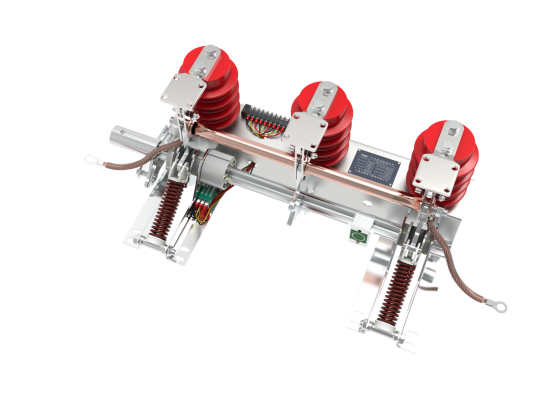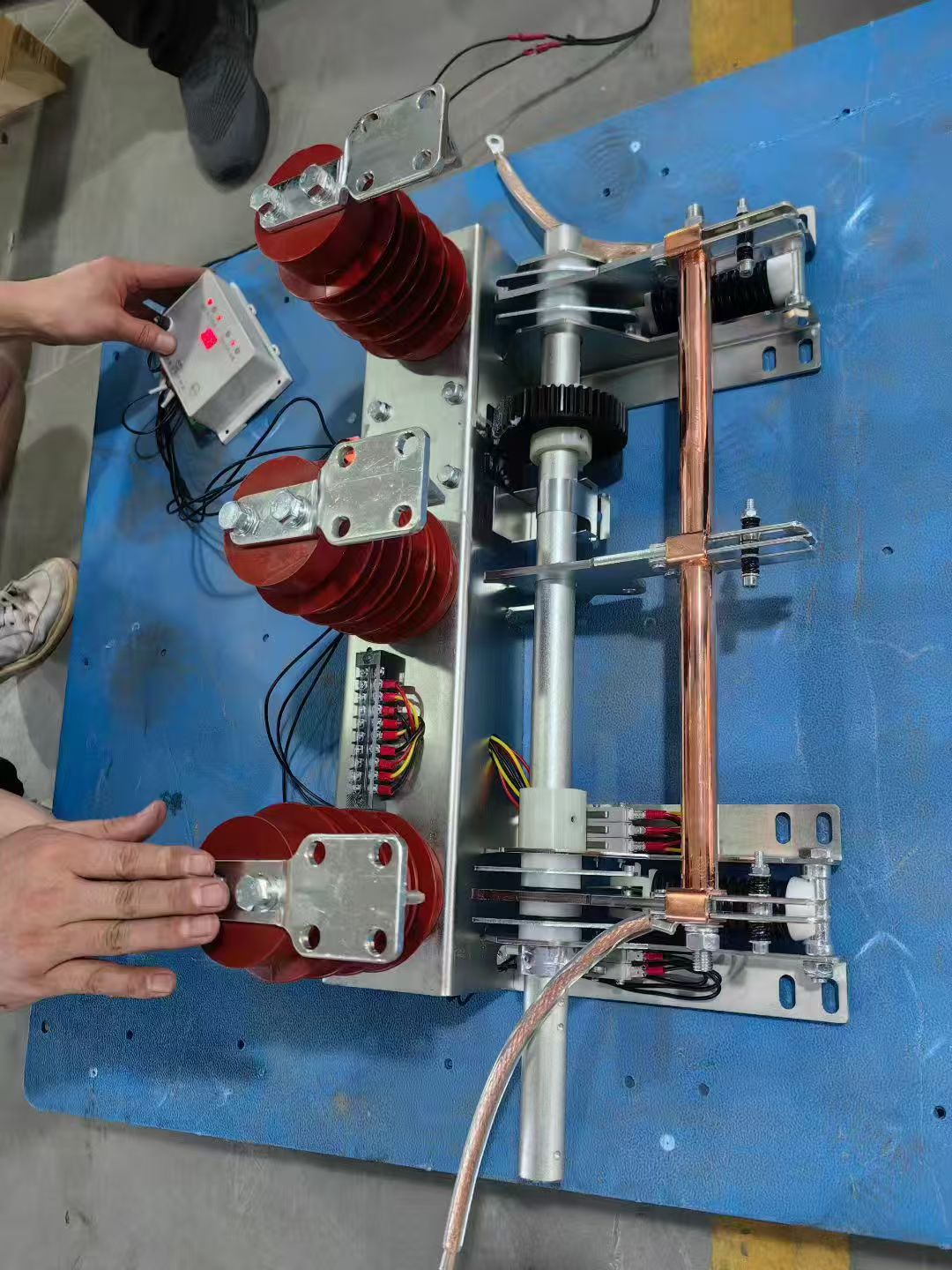
The following is a deep analysis and radical solution for the three fatal defects of JN15 Grounding switch, combined with fault mechanism, improvement technology, and practical cases, to provide reliable solutions for power operation and maintenance:
TOP1 Poor Contact: Radical Solution for Wear of Silver Coating on Contact
fault mechanism
In the first scenario, due to frequent opening and closing of the circuit, friction loss occurs. After the silver layer is thinned, the copper base is exposed (silver plating<5 μ m), resulting in a sharp increase in contact resistance (>300 μ Ω) and causing local overheating (temperature rise>80 ℃).
The second type of arc corrosion is the erosion of the contact surface by the arc when the short-circuit current is turned on, forming oxidation pits.
Radical measures
1. On site emergency response:
-Fine polishing: Use 600 grit sandpaper to remove the oxide layer → clean with alcohol → apply conductive paste (reduce contact resistance by 30%).
-Temporary load reduction: Limit the short-circuit current to ≤ 80% of the rated value (requiring dispatch cooperation).
2. Long term solution:
-Thickened coating: Customized 8 μ m silver layer+0.5 μ m nickel bottom layer (anti copper diffusion), increased wear resistance life by 3 times.
-Laser cladding: Cladding a nickel based alloy layer (hardness HV250) in the contact area of the moving blade, increasing the resistance to arc erosion by 5 times.

TOP2 Spring Failure: Prevention System for Fatigue Fracture
fault mechanism
The traditional spring design has a lifespan of only 1000 cycles, and after exceeding the limit of use, S-N curve fatigue fracture occurs (with a shell like fracture surface).
There is also a situation where the end of the spring is not ground flat, resulting in local stress exceeding 500MPa (the yield limit of the material is 1800MPa).
Radical measures
1. Proactive replacement strategy:
-Replace by frequency: Mandatory replacement every 2000 operations (not 5 years), and record the frequency of operations.
-Stress screening: The new spring needs to pass 100000 fatigue tests (amplitude ± 2mm, frequency 5Hz).
2. Design reinforcement:
-Material upgrade: Use 60Si2CrVA high-strength spring steel (tensile strength>2000MPa) instead.
-End treatment: precision grinding+shot peening to eliminate stress concentration points.
>Case: Coastal wind farms have implemented a 2000 replacement system for JN15 springs, resulting in 3 years of zero fracture failures.
TOP3 Sealing Aging: Systematic Improvement of Silicone Cracking
fault mechanism
-Long term exposure to an environment above 100 ℃ (such as heating inside a switchgear) can cause the silicone chain to break and crack.
-Chemical corrosion: Gas permeation such as H ? S and SO ? causes the volume expansion rate of the sealing ring to be greater than 20%.
Radical measures
1. Material substitution:
-Fluororubber (FKM): resistant to temperatures ranging from -40 ℃ to+230 ℃, acid and alkali (pH 1-14), with a lifespan of over 15 years.
-Pressure test: Conduct a 0.6MPa/30min air tightness test before installation (higher than the national standard of 0.3MPa).
2. Structural optimization:
-Double channel seal: primary seal (fluororubber)+secondary seal (EPDM) dual protection.
-Drainage groove design: A drainage hole is opened at the bottom of the flange to block the accumulation of condensed water.
>Data comparison: After aging at 120 ℃ for 1000 hours, the tensile strength retention rate of fluororubber is greater than 85% (silicone only 45%).
Practical case: 110kV substation contact temperature over limit warning
Fault background
-Infrared temperature measurement of a 110kV substation found that the temperature of the C-phase contact of JN15-40.5 grounding switch reached 112 ℃ (A/B phase ≤ 65 ℃), far exceeding the limit of DL/T 596 standard (70 ℃).
process
1. Precise positioning:
-Scan with FLIR T1020 infrared thermal imager (accuracy ± 0.5 ℃) and lock the hot spot as the contact area of the moving/stationary contact.
2. Disassembly analysis:
-The silver plating layer is locally worn down to 3 μ m, with a contact resistance of 450 μ Ω.
-The fatigue deformation of the spring resulted in insufficient contact pressure (measured pressure 180N<standard value 250N).
3. Comprehensive rectification:
-Contact refurbishment: laser cladding nickel based alloy layer
-Spring replacement: Upgrade to 60Si2CrVA material
-Sealing modification: Replace the fluororubber sealing ring
After the renovation, the contact temperature remained stable at 55 ℃, avoiding accidental tripping of the backup protection of the main transformer and reducing annual maintenance costs by 64%
Radical system: closed-loop control from design to operation and maintenance
Defect type | Design prevention | Operation and maintenance monitoring | Transformation technology |
Poor Contact | Thickening of Coating+Laser Cladding | Infrared Temperature Measurement (Quarterly) | Conductive Paste+Torque Calibration |
Spring failure | 60Si2CrVA steel+shot peening strengthening | operation counter+annual stress sampling | 2000 forced replacements |
Sealing aging | Fluororubber+double seal | Sealing ring hardness testing (annual inspection) | 0.6MPa pressure test |

Oil&Gas exploited
Automotive Manufacturing
Transportation & Dlistrlbutlon
Manufacture
Industrial Construction
Green Energy
Copyright ? 2024 All Rights Reserved
Back to top 
Comment
(0)